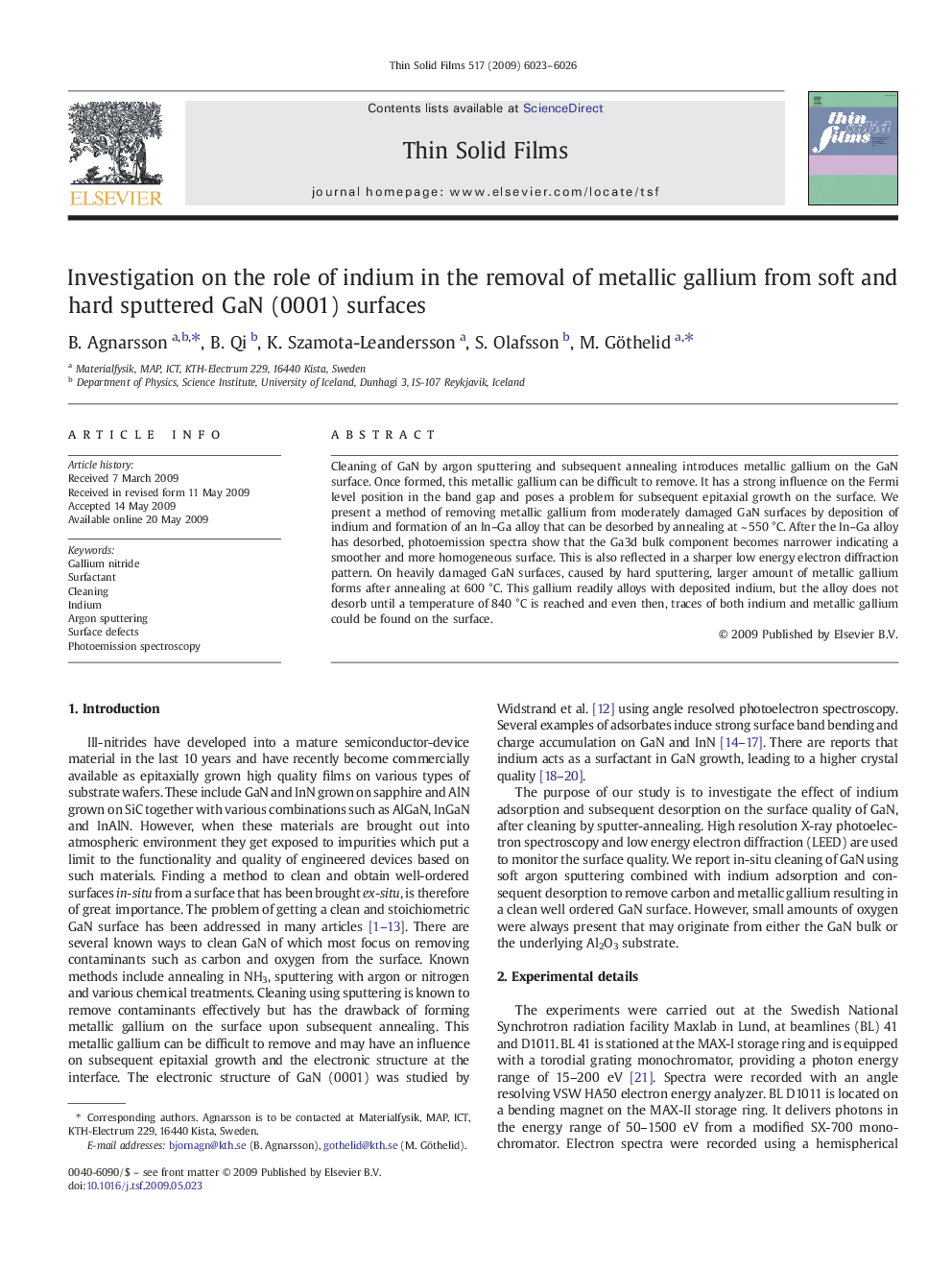| Article ID | Journal | Published Year | Pages | File Type |
|---|---|---|---|---|
| 1672552 | Thin Solid Films | 2009 | 4 Pages |
Cleaning of GaN by argon sputtering and subsequent annealing introduces metallic gallium on the GaN surface. Once formed, this metallic gallium can be difficult to remove. It has a strong influence on the Fermi level position in the band gap and poses a problem for subsequent epitaxial growth on the surface. We present a method of removing metallic gallium from moderately damaged GaN surfaces by deposition of indium and formation of an In–Ga alloy that can be desorbed by annealing at ~ 550 °C. After the In–Ga alloy has desorbed, photoemission spectra show that the Ga3d bulk component becomes narrower indicating a smoother and more homogeneous surface. This is also reflected in a sharper low energy electron diffraction pattern. On heavily damaged GaN surfaces, caused by hard sputtering, larger amount of metallic gallium forms after annealing at 600 °C. This gallium readily alloys with deposited indium, but the alloy does not desorb until a temperature of 840 °C is reached and even then, traces of both indium and metallic gallium could be found on the surface.
